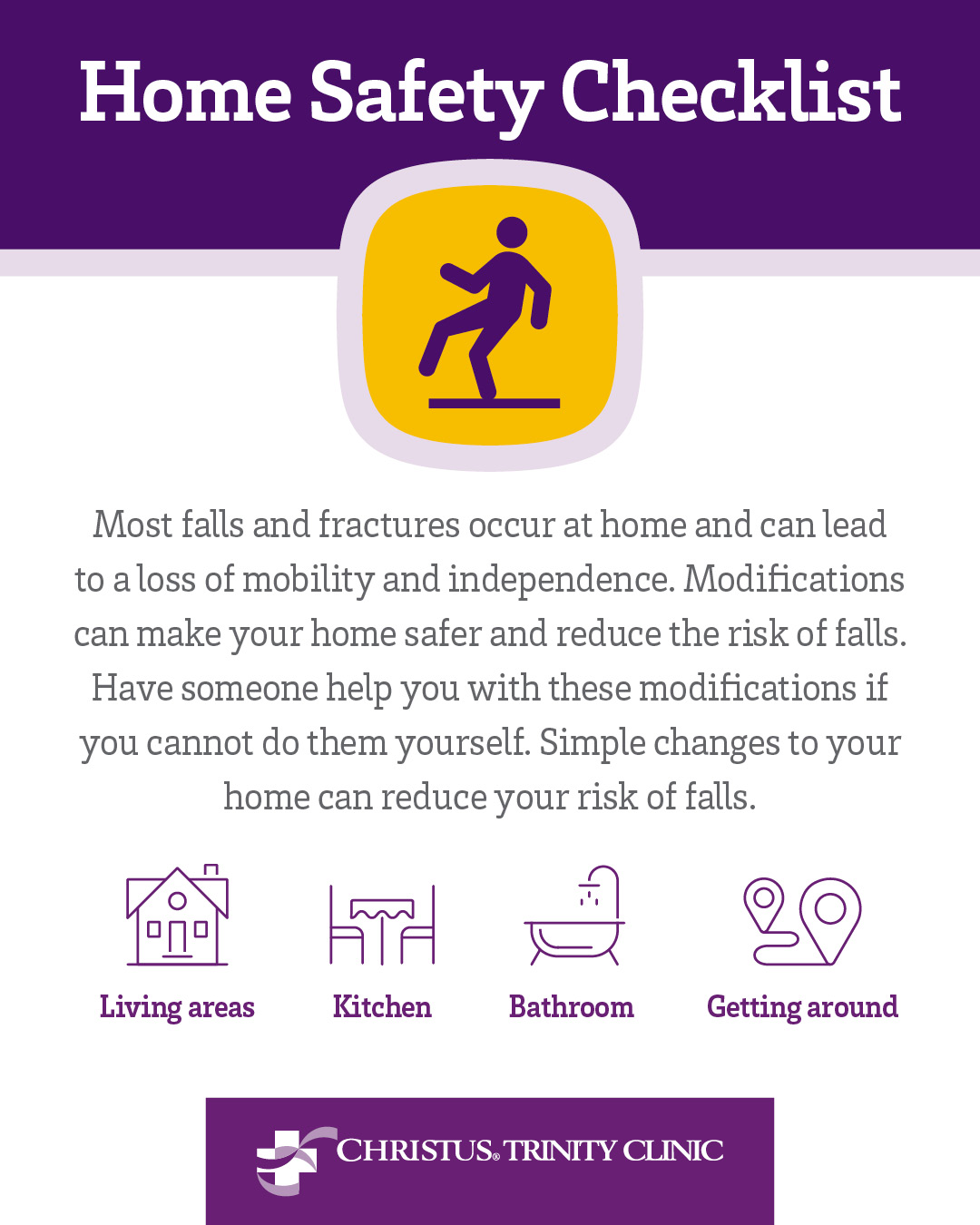Learn How to Reduce the Risk of Slips and Falls
Slipping and falling in your own home can cause serious injury, yet falls are one of the most common accidents in our homes.
Whether it's a living room, kitchen, or bathroom, the risk of falling is still present, and you can take steps to reduce this risk.
It is crucial to involve your healthcare provider when modifying to prevent falls. Some providers can evaluate your home environment and advise on necessary changes.
Let's look at how you can reduce the risk of slips and falls in the most common areas of our homes.
Begin a regular exercise program: Exercise is one of the most important ways to reduce fall risk. It makes you stronger and helps you feel better. Exercises that improve balance and coordination are the most helpful. Lack of exercise leads to weakness and increases your chances of falling. Ask your physician or healthcare provider about the best exercise program for you.
Review your medications: Have your physician or pharmacist review all your medicines, even over-the-counter ones. As you age, the way medicines work in your body can change. For example, some medications, or combinations of medicines, can make you sleepy or dizzy and cause you to fall.
Get your vision checked: Schedule an eye exam with your optometrist or ophthalmologist at least once a year. You may be wearing the wrong glasses or have a condition like glaucoma or cataracts that limits your vision. Poor vision can increase your chances of falling.
Make your home safer: About half of all falls happen at home, so take a moment now to do the following:
- Remove things you can trip over (like papers, books, clothes and shoes) from stairs and places where you walk.
- Remove small throw rugs or use double-sided tape to keep rugs from slipping.
- Keep items you often use in cabinets you can reach easily without using a step stool.
- Have grab bars installed next to your toilet and in the tub or shower.
- Use non-slip mats in the bathtub and on shower floors.
- Improve the lighting in your home. As you get older, you need brighter lights to see well. Hang lightweight curtains or shades to reduce glare.
- Have handrails and lights installed on all staircases.
- Wear shoes both inside and outside the house. Avoid going barefoot or wearing slippers.
Understanding the Most Common Places Where Falls Occur in the Home
Living rooms, kitchens, and bathrooms are some of the most common places where falls occur.
Furniture that is challenging to navigate, such as coffee tables or armchairs, often causes falls in living rooms. Falls in kitchens can mainly occur if the floor is slippery due to spilled liquids and food debris.
Wet and slippery surfaces due to bath water or shower steam often cause bathroom falls. To reduce your risk of falling in these areas, remove hazards, improve lighting, and install grab bars for extra support.
Make sure you have an Injury Prevention Plan:
- Develop a plan with your healthcare provider to help you prevent falls.
- Talk to your healthcare provider about any changes in your health and ask for their advice on reducing your risk of falling.
- Tell them about recent medication changes, vision, exercise, or nutrition that could affect your balance.
- Consider enrolling in a fall prevention program where you can get more tips on staying safe at home and learning exercises that can improve balance and coordination.


